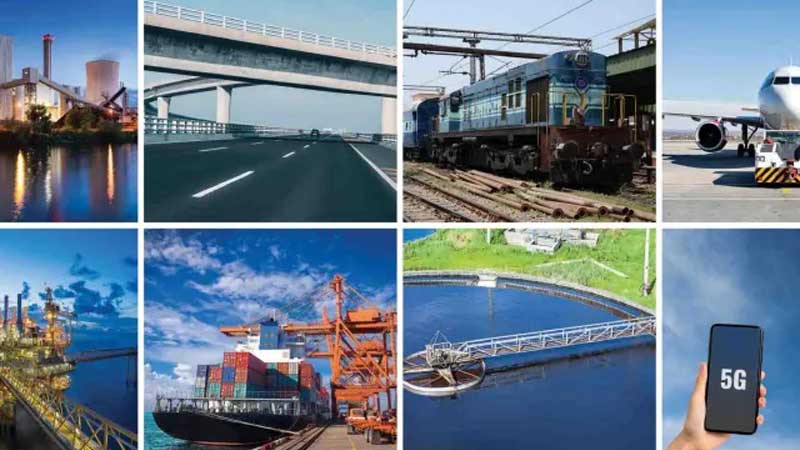
India is at the cusp of a growth cycle and on track to become the fourth largest economy in the world with an ambition to reach $5 trillion in few years. It is also expected to be the third largest construction market by this year, 2022. The latest report said investor confidence is strong in infrastructure sector, supported by favorable long-term financing conditions, recovery stimulus packages and overseas investment in terms of FDI inflows. In FY21, infrastructure activities accounted for 13% share of the total FDI inflows of US$ 81.72 billion. India will require investments worth INR 50 trillion across infrastructure segment for sustainable development in the country.
In the Union Budget 2022-23, the government has given a massive push to the infrastructure sector under Prime Minister Gati Shakti scheme that has received its first ever outlay of INR 20,000 Crore. The scheme envisage for integrated planning and coordinated project execution with sustained monitoring of projects consisting of several ministries incorporating all government approach under one umbrella while focusing on multimodal connectivity being the key aspect of India’s economic progress.
Emphasizing the importance of investment for creating modern infrastructure, seven engines of growth has been identified - roads, railways, ports, airports, mass transport, waterways, and logistics infrastructure. The Budget aims to construct 25000 kilometres of National Highways in 2022-23, almost double of the previous year with the highest ever budget allocation of INR 1,18,101 Crores. The Additional INR 1,00,000 Crore interest free support to the states for implementation of Gati Shakti scheme and rural roads will accelerate the local economy.
Another significant announcement is the setup of 100 cargo terminals under the PM Gati Shakti. Transport and logistics infrastructure is a big constituent of the broader capital expenditure budget, estimated to be around 2.9 per cent of GDP. The announcement for manufacturing 400 new generations Vande Bharat trains by 2025 as part of the master plan will support the initiative of better energy efficiency and reducing carbon footprints while giving people a better riding experience. As part of Atmanirbhar Bharat plan, 2000 kilometers of railway network will be brought under Kavach, the indigenous world-class technology for safety and capacity augmentation in FY22.
Apart from the dedicated Bharatmala, Sagarmala, inland waterways and UDAN scheme, the Finance Minister also announced the Parvatmala; a national ropeways development programme that is being positioned as a sustainable alternative to conventional roads in difficult hilly areas. The government plans to award contracts for eight ropeway projects for a length of 60 kilometers this year.
Along with logistics efficiency, huge investment in creating drinking water infrastructure, irrigation and river-interlinking, sewerage and social infrastructure with clean energy have been the highlight of the budget. There is a growing recognition about the need of proper water management with adequate infrastructure development to propel economic growth and the initiative under the Jal Jeevan Mission is a clear indication that Government of India is looking for holistic and sustainable approach.
The budgetary allocation for water infrastructure development is an evidence of India moving forward with a conviction to resolve water issues and to modernize water distribution system. The fund of INR 44,605 Crore allocated for the Ken-Betwa river linking project will help to provide drinking water facilities to 62 lakh people and better irrigation to 9 lakh hectares while supporting clean energy generation of 103 MW hydro power and 27 MW solar power. At SPML Infra, we know that the project will bring a big difference in people’s lives and agriculture yields as we have been part of the progress of such a large project in Gujarat called as Saurashtra-Narmada Avataran Irrigation Yojana (Sauni Yojana), which is quite successful in its target.
The allocation under Swachh Bharat Mission (Rural) of ?9,994 Crore and ?2,300 Crore for Urban, AMRUT Scheme with ?7,300 Crore, National Mission for Clean Ganga for ?600 Crore, Major & Minor Irrigation Projects of ?4,904 Crore along with other urban infrastructure development projects will certainly be a game changer in the water sector in India. The linking of five rivers including Damanganga-Pinja, Krishna-Godavri, Krishna-Pennar, Pennar-Cauvery, Par Tapi- Narmada is going to have a long term impact on water sustainability initiatives in the proposed regions.